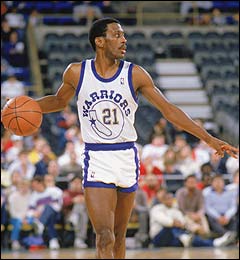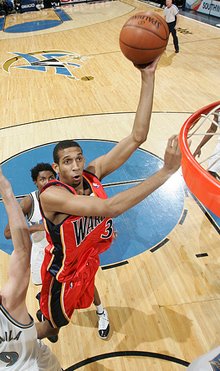 I came across this piece by Robert W. McChesney on NBADraft.net that captured the essence of what I believe to be the correct path to building a legitimate contender. His detailed article entitled, The Superstar Theory: Revisited and Supercharged, Part 1 illustrates how important patience and the wherewithal to avoid the temptation of targeting mediocre talent that blows valuable cap space and puts teams out of the running for a high draft pick. More often then not, short term gains and instant gratification lead to just a playoff appearance and the spinning of wheels.
I came across this piece by Robert W. McChesney on NBADraft.net that captured the essence of what I believe to be the correct path to building a legitimate contender. His detailed article entitled, The Superstar Theory: Revisited and Supercharged, Part 1 illustrates how important patience and the wherewithal to avoid the temptation of targeting mediocre talent that blows valuable cap space and puts teams out of the running for a high draft pick. More often then not, short term gains and instant gratification lead to just a playoff appearance and the spinning of wheels.A few excepts:
.....What did Ainge understand? What did Ainge do? He understood that the basis for winning an NBA title is having a superstar in his prime. Not an all-star, or a bunch of all-stars, but a superstar. There are only a few in the game at any time so they are almost impossible to get. But he went and got one. He did so by carefully developing young players – aside from Paul Pierce the cupboard was bare in 2003 when he took the reins of the team -- and not being obsessed with short-term performance. By 2007 he had the chips to keep Paul Pierce and still get Kevin Garnett, and to surround him Ray Allen. He moved quickly and decisively in some of the most brilliant GM work in any sport in history.
.....The importance of having a player-for-the-ages in his prime to winning an NBA title, or even contending, is astonishing. Yet, as I stated at the top, most fans and many NBA GMs fail to grasp this. Fans root crazily for modest incremental improvements, failing to see that by getting a lesser chance at a high draft pick or by squandering cap space they are only digging their hole that much deeper. GMs similarly obsessed by marginal improvement fail to take steps to improve their chances of actually winning a title.
McChesney goes on to rank the best players to ever play in the NBA. The three main components in the ranking formula are MVP voting, All-NBA voting, and All-Defensive Team voting. Players are classified as Gold, Silver, and Bronze Superstars.
Click here to see the results of Part I of The Superstar Theory: Revisited and Supercharged.

























No comments:
Post a Comment